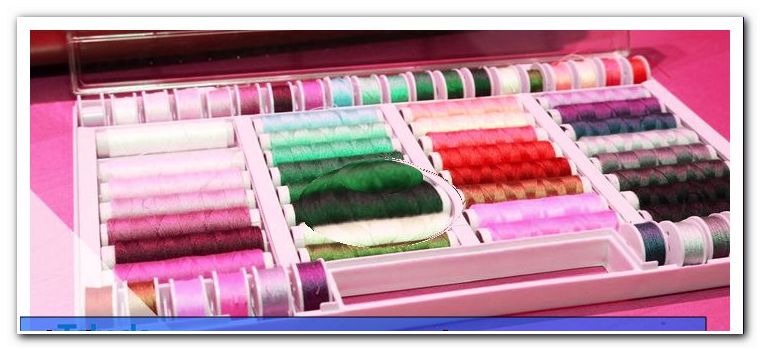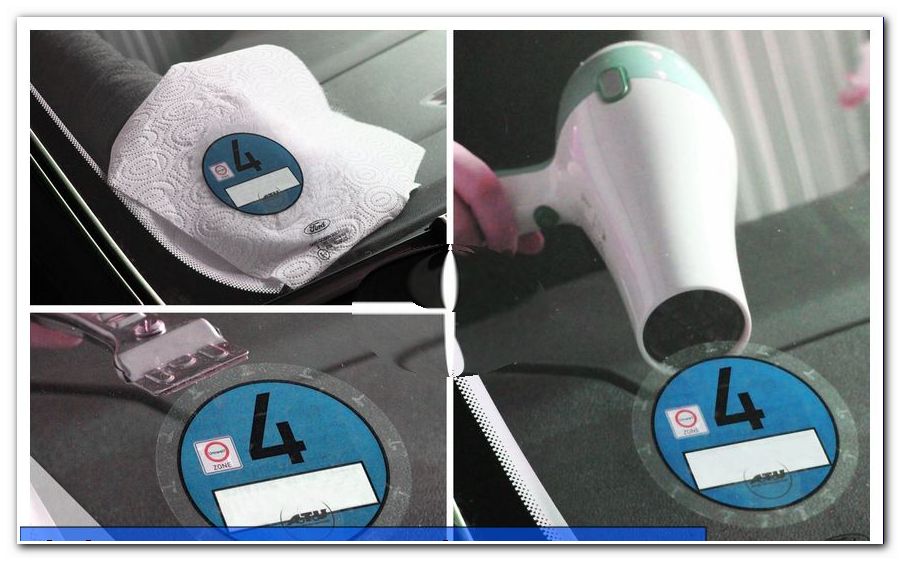Acrylic bathtub has scratches - this is how you repair them

- material
- manual
- preparation
- Remove surface scratches with acrylic polish
- Deep scratch removal with filler
- Tips for taking care of an acrylic bathtub
Bathtubs are not only the perfect place to relax today, they also make a significant contribution to the look of an oasis of well-being in bathrooms. Annoying if this look is disturbed by unsightly scratches in an acrylic bathtub. Without manual skills, these can be easily removed in just a few minutes with the right instructions.
Scratches in acrylic bathtubs can occur in many different ways. A ratchet with the clock, a wrong cleaning or age-related dilutions of the acrylic layer are the most common causes. Here you should respond quickly, because scratches not only look ugly, but can also be the beginning of delamination of the surface coating. The result is roughness and discoloration that can not be gotten away.
With the right utensils, a professional guide and expert tips, any scratch marks from an acrylic bathtub can cheaply and quickly remove itself and close the surface again. These make the order expensive craftsmen superfluous and cash money is saved.
material
When removing scratches in acrylic bathtubs, it depends on how deep the surface damage is during the material acquisition and preparation. Superficial scratch marks, as they are often caused by abrasives when cleaning, require less effort and materials, as deeper cuts in the surface.
You need this for slight scratch marks:
- Special polishing paste for acrylic surfaces - costs about 10 Euro
- a wet rag
- a dry cotton cloth or cotton wool, which is available for only a few euros
You need this for deep scratches:
- Acrylic filling compound for sealing and surface approximation - costs between 8 Euro and 15 Euro
- Spatula - cost about 2 Euro
- 800 sandpaper - costs about 1 Euro
- 1200 wet-lubricating paper - cost about 1 Euro
- Polishing paste for acrylic surfaces - costs about 10 euros
- a wet rag
- a dry cotton cloth or cotton wool, which is available for a few euros
- Optionally, acrylic polish for the adjustment of gloss and light color differences
manual
preparation
For superficial scratch removal, thoroughly clean your acrylic bathtub. Reliably remove grease deposits and dirt edges. Then dry the surface.
To prepare for deep scratches, sand the scratch edges and the surrounding area with the 800 grit paper. Wet the sanded surface and then smooth the surface with the 1200 grit sandpaper. Then proceed with cleaning and drying the bathtub, as described in the superficial scratch removal.

Tips: If you use filling material with deep scratches, this is ready as a spatula product or as a powder for mixing. On a product for self-stirring should abandon mainly artisan layman. If the ratio of water putty is not correct, there is no long-term repair, the mass sticks poorly and dissolves over time. Prefabricated tubes with filling material for surface indentations are particularly suitable for scratch removal and, if necessary, also fill cracks.
When sanding deep scratches, work on a surface that extends at least three to four inches beyond the scratch notch. Due to the roughened surface, the filler to be applied later in the process better contacts and provides the basis for more durability and durability in this area.
When the material needed is at hand and the preparations have been completed, the scratch removal begins.
Remove surface scratches with acrylic polish
Step 1: Apply the acrylic polish to a damp cotton cloth. Spread the polish over the scratch marks so that they are well covered. Depending on the instructions for use of the acrylic polish, wait a few minutes until the polish has dried slightly.
Step 2: Then rub them with a little pressure in a circular motion over the superficial scratch marks.
Step 3: Then let the acrylic polish dry completely.
Step 4: After about five to eight minutes, also rub the polish in a circular motion, with a dry cloth or polishing pad, until completely removed.
If not all scratch marks have been removed, repeat the process one or two more times, increasing the pressing pressure when applying the acrylic polish in circular motion.
Step 5: Finally, remove last polish residues with water.
Deep scratch removal with filler
Step 1: Fill the filling paste in the scratch.
Step 2: Using a spatula, spread the filling paste over the scratch edges and the sanded environment.
Step 3: Allow the filling material to dry well - exact drying times can be found in the instructions for use of the filling compound - which can be up to 24 hours, depending on the product. Ensure that the filling material dries completely by pressing lightly on the finger before continuing.
4th step: Then moisten the surface of the filling compound.
Step 5: Sand the wet, repaired surface smooth with the 1200 grit sandpaper.
If there is any visual difference between the repair compound and the old acrylic surface, you can compensate for this by using polishing paste for acrylic baths.
Tips for taking care of an acrylic bathtub
... after a scratch removal and preventing new scratches
Basically, when cleaning an acrylic bathtub should be dispensed with aggressive detergents and coarse scouring powder. It is recommended to clean acrylic baths after scratch removal with surface-friendly cleaning agents and not to use too rough scouring pads. These can leave traces of sanding, which subsequently show up as unsightly scratches.

For further care and for coarse dirt and lime deposits, it is advisable to treat an acrylic bath regularly with acrylic polish or special acrylic cleaners. This not only cleans the surface, but also removes traces of scratch already visible to the eye and places a protective film on the surface of the bathtub. This keeps the surface supple and reduces the risk of scratching again. In addition, special acrylic products for care and cleaning lead to color refreshments of old, faded bath coatings.
Remove jewelry before each bath and avoid using the bathtub rim as a coat rack. Trouser buttons or belt buckles quickly ensure new scratch marks.
If you have an enamel bath or even a washbasin made of this material, you will find out here how to repair annoying scratches and cracks in the enamel: repair enamel




